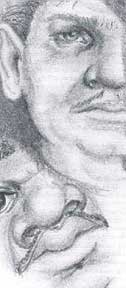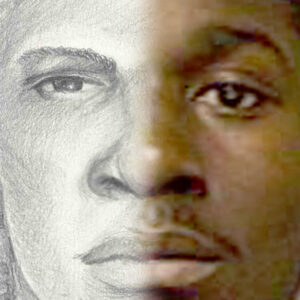The Following is an excerpt from an issue of the Florence County Sheriff’s Office, County Newsletter
 How would you react if you were witness to a crime? Would your mind go blank?, would you run?, or would you attempt to take in as much information as possible? Those precious few seconds can prove to be extremely valuable in the eventual solution to the crime, and although we doubt our abilities at times, the mind has an incredible knack for storing data – quickly! Not everyone has such an obvious identification feature, but everyone has their own individual look. Try to focus on the first thing that catches your eye about the individual. You can practice this technique by observing people living their everyday lives. Look around you and consider what makes a certain person look the way he or she does. You will find that it is usually one or two features that are the dominate makeup of that individual’s look. Eyes are usually the most and only visible feature on a suspect. Look at the suspect’s eyes, do not stare but take in the uniqueness of the eyes. Consider size, shape, color, whether they are close or far apart, perhaps they are deep-set, and consider how close the eyebrows rest above the eyes. While observing the eyes, notice the eyebrow thickness and shape. An individual’s head shape is another excellent identification point. Try to break the different shapes into the following categories: round, narrow, long, triangular, square, and oval. If it helps you to recall, use off-the-wall descriptions such as “peanut head,” “bullet head,” and “pumpkin head.” The same method is utilized for all features – the nose, lips, ears, chin, forehead, and cheekbones. Look for peculiarities on the individual’s hairstyle, whether or not facial hair is present. Look for anything that causes the individual to standout. Perhaps there is a scar, mole, freckle, or tattoo which catches your eye. Maybe the suspect has acne scarring, or a matted or oily complexion. Do not limit yourself to facial features, often times there is no way to see the individual’s face. Take advantage of the chance to observe physical peculiarities, clothing, whether the suspect limps, whether or not he or she slumps while standing, how he or she runs or walks, his or her mannerisms, and if possible listen, the voice may also be an identification point. Any of these things may be the information the investigator needs to lead to the identity of the suspect. Remember, it may only take one of these features to result in an identification. The investigator, in turn, has the ability to eliminate suspects through obvious appearance discrepancies. As a Forensic Artist, I am constantly observing people. These are questions asked by the artist when conducting a composite sketch interview. Practicing the above observation techniques allows for a flowing interview and an increased chance of the interview resulting in a likeness of the suspect. 
|


